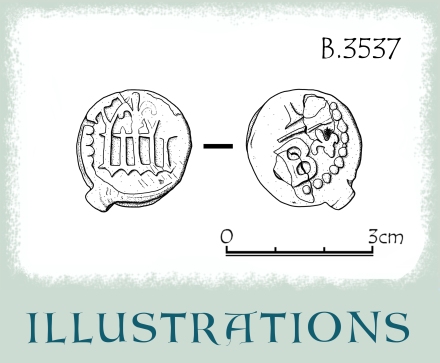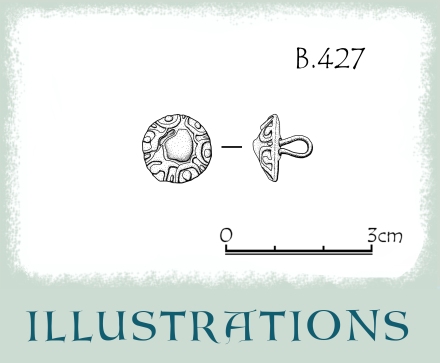small finds illustrations...
a complicated, time consuming process, but one that yields excellent results...

illustrating our small finds...
The illustration of our small finds will be undertaken following the principles of illustrating small finds as detailed in BAJR Guide 32:
Archaeological Illustrations - Small Finds (2013). The reason we want to illustrate many of our objects is due to the three-dimensional nature
of them and it will mean that we can communicate more detail and information. We intend to illustrate a selected group from each typology.
However, illustrating small finds can be costly and so if you would like to help us achieve our target why not consider sponsoring a
group of objects to be professionally illustrated, for example, you could select multiples of 5, 10, 20+ buttons or buckles.
There's a huge selection of objects to choose from - you could even commission a rare piece or one that was particularly intricate?
Your name, or that of the sponsoring organisation will be acknowledged in our publications!

the objects we want you to help us illustrate...
As illustrating objects can be a time consuming process we really need to start producing them as soon as possible - particularly as we aim
to illustrate approximately 1000 objects! Typical costs for a single small find illustration can be as much as £40 (see how it's done below).
However, there are some economies of scale and to commission a professional illustrator to produce, for example 30 buckle illustrations, would
cost in the region of £600 (i.e. approximately £20 per object).
The types of small finds that we want to illustrate include:
dress accessories:
buckles
buttons
strap ends
pins
needles
lace chapes
decorative mounts
belt fittings
items associated with trade:
lead trade weights
lead trade tokens
trade weights
jetton
household items:
keys
locks
toys
cuttlery
ceramics
furniture items (handles, mounts etc.)
spikes
brackets
mounts
escutcheon plates
pot mends
pilgrimage:
pilgrims ampulla
pilgrim signs (badges)
secular badges
horse harness
crucifix
bells
craft:
metal & leather working tools (hammers, files, axes, awls etc.)
medical instruments
spindle whorls
thimbles
window came
casting waste

how we illustrate objects...
Illustration drawings are initially prepared on drafting paper using a Staedtler 788 C Mars technico clutch pencil with 2mm lead and a
Staedtler Mars Lumograph pencil with 6H lead. A magnifying glass and raking light from a strip light are used to detect fine detail.
Dividers are used to confirm the objects' dimensions. A second version of the drawing is then prepared on drafting paper by tracing
over the pencil lines of the first drawing with 0.18 and 0.35mm steel-nibbed Rotring Isograph technical drawing pens.
Different line weights are incorporated in the drawings to help emphasise decoration or shadow. Stippling will be added to individual drawings
to help emphasise the form and depth of the object. These second ink drawings will then be scanned and saved as 25-bit colour images, with a
resolution of 720 dpi. in a .TIFF format. Adobe Photoshop photo editing software will be utilised to prepare the final illustration.
Where object profiles are drawn, the cross-sections will be shaded. The final images will be represented in our publications at a scale
of 1:1 in a 720 dpi. resolution which is of publication standard.




